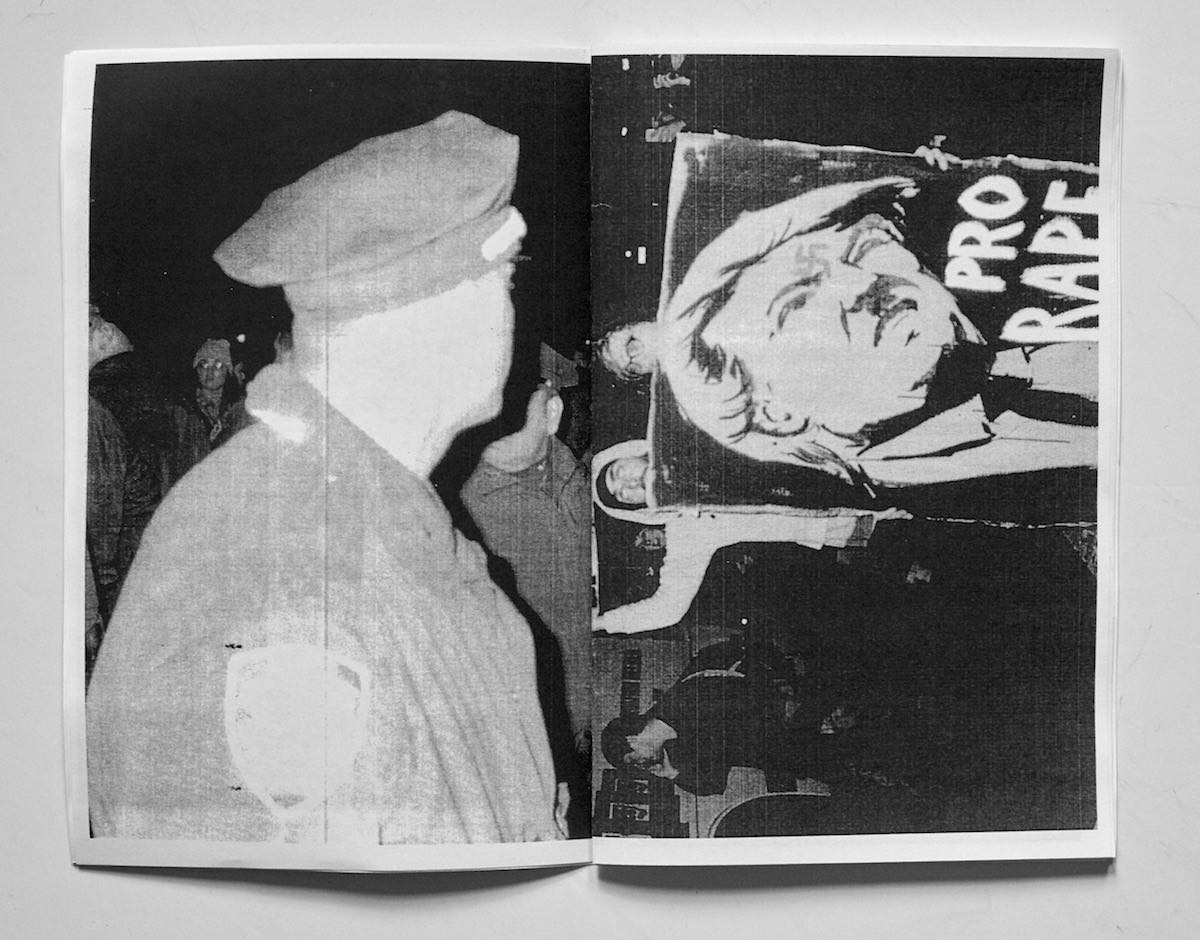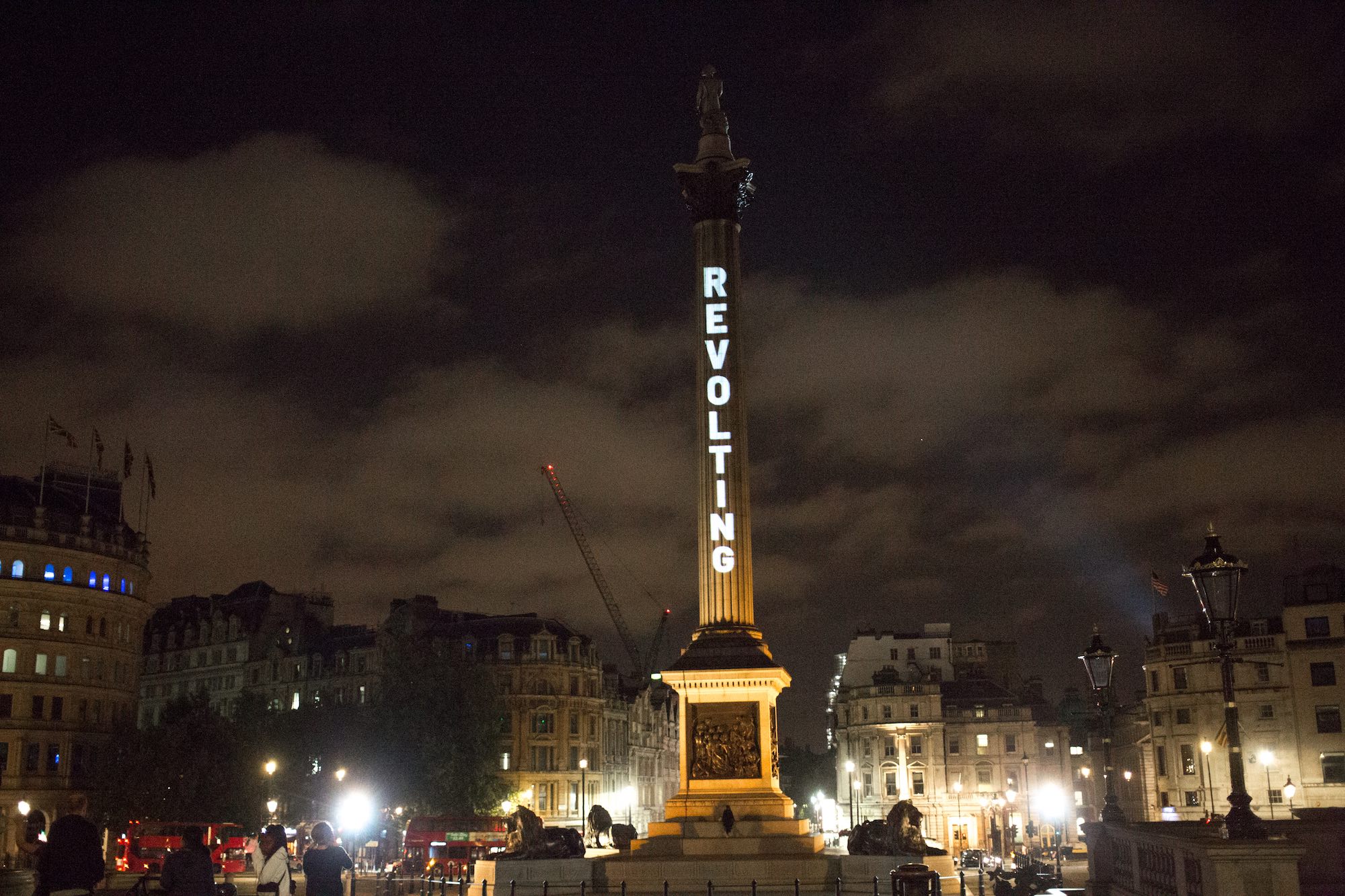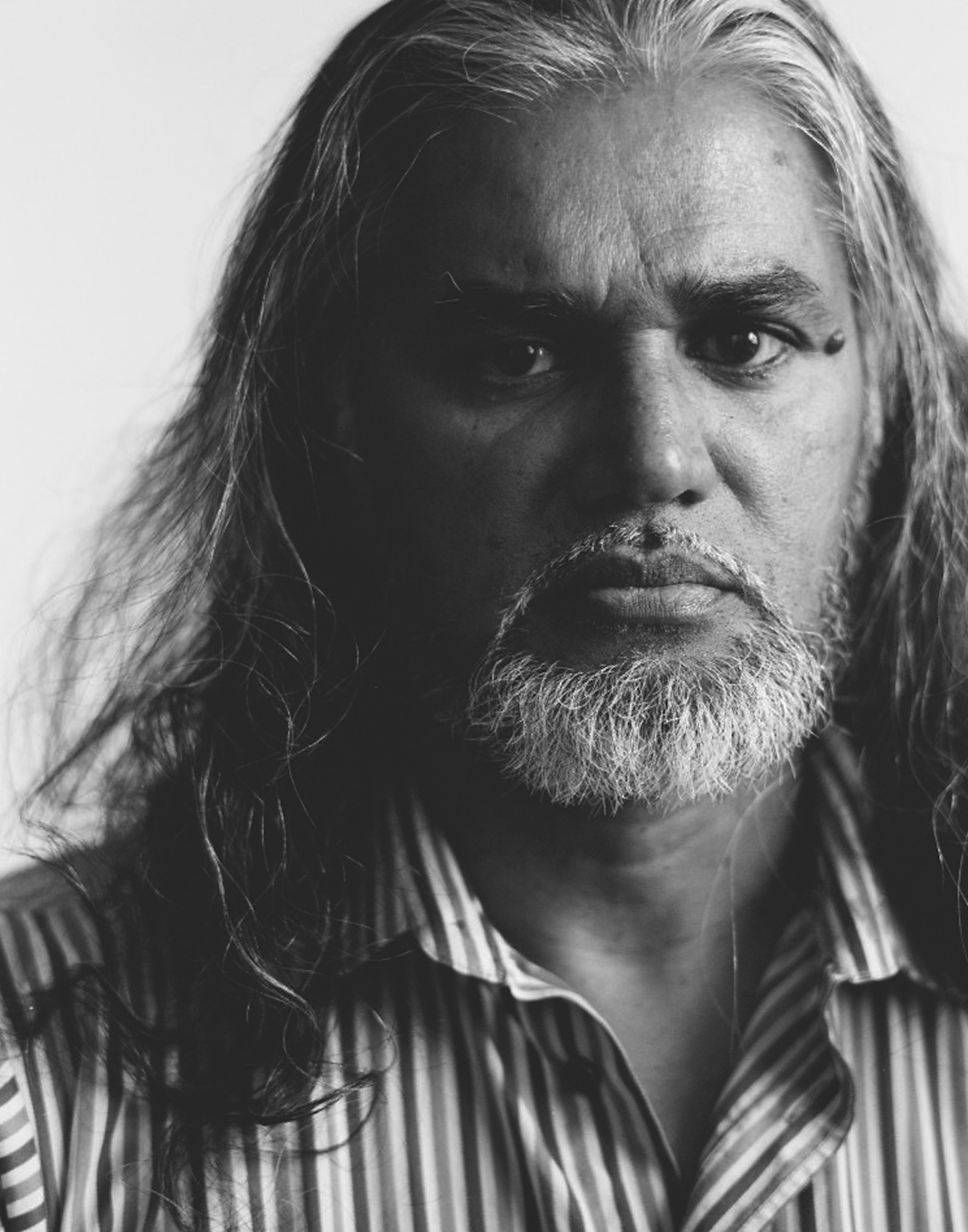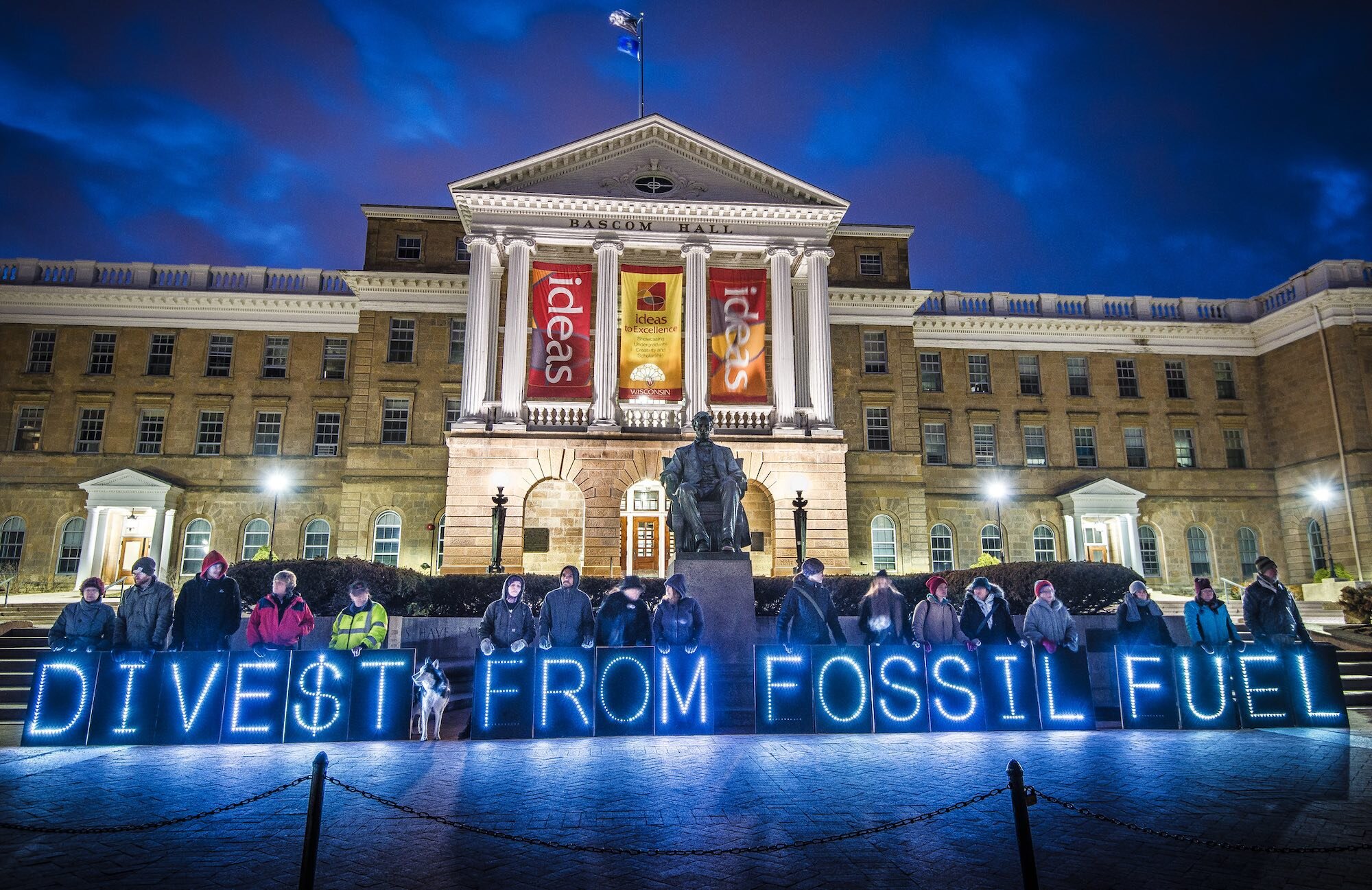The Pre-Presidential Library of the United States
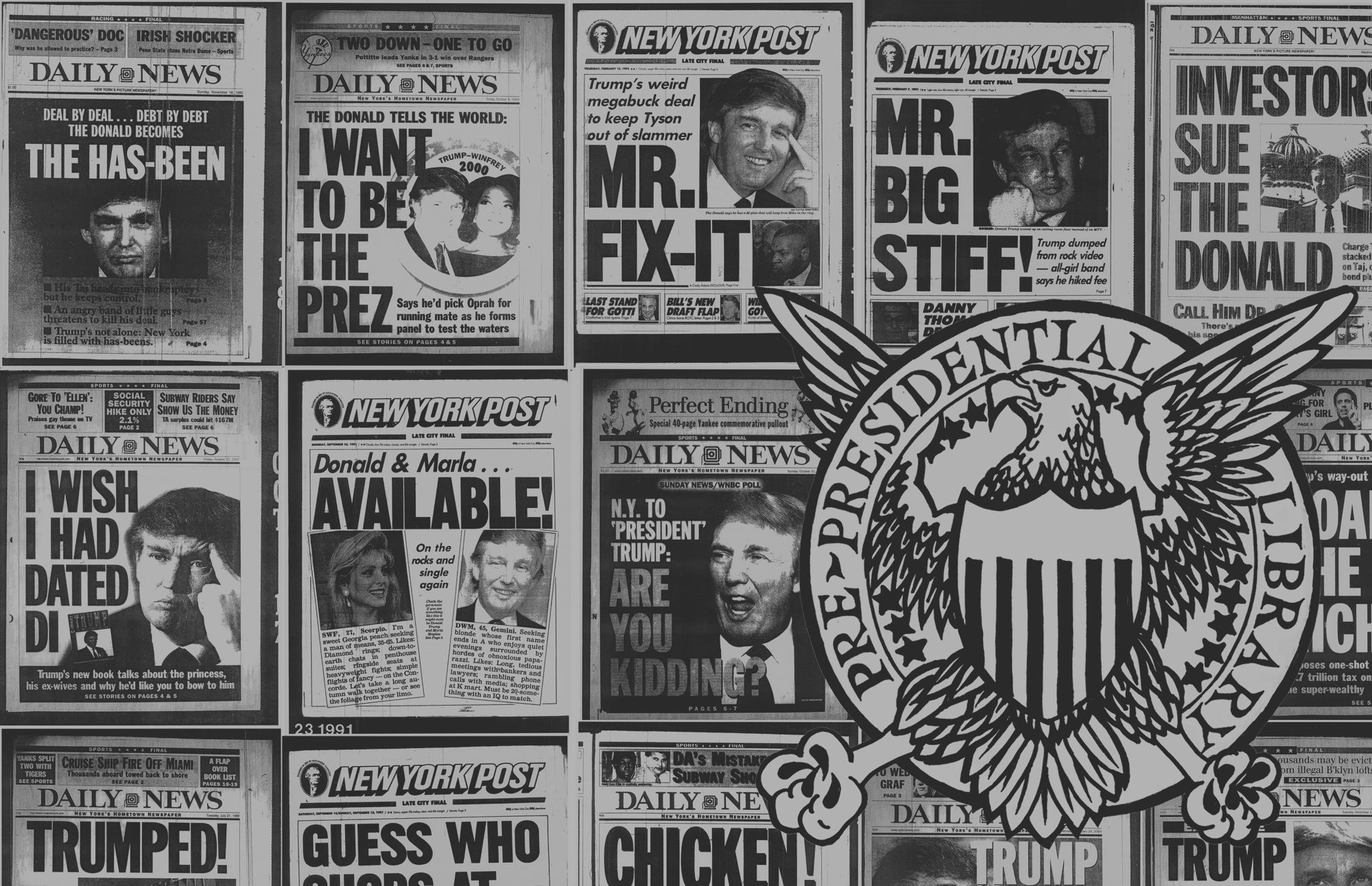
Hayward Gallery recently presented artist Aleksandra Mir’s The Pre-Presidential Library of the United States, a series of 32 front page covers from two of NYC’s leading tabloids, the Daily News and the New York Post, featuring headlines related to U.S. President Donald Trump.
From his personal life to business dealings to early political aspirations, this archive of press materials from the period 1986 to 2000 foretell Trump’s rise to power and reveal his long pre-history of media presence and manipulation. Aleksandra spoke to Good Trouble about the exhibition and its relevance and her thoughts on media today.
Where did the idea for the exhibition and these materials come from?
My archive, which encompasses the period of 1986-2000, was compiled during an extensive research period at the media archives of the NY Public Library in 2007 when I reviewed 10,000 tabloid covers – their combined output of 15 years leading up to the millennium. This research formed the basis for my drawing show Newsroom, at the Mary Boone Gallery where I worked live with 17 assistants in the gallery for two months in 2007, re-creating old news and making new art every day, in a setting akin to a Manhattan newsroom.
I have been in conversation with Ralph Rugoff, Director at the Hayward Gallery, about revisiting this material for the past 18 months, so this current show developed in a new direction. Initially, the plan was to re-create my original 20 Trump drawings, which were among a total of 240 drawings originally created in 2007 by a team, but we abandoned the idea. At the same time last year, I began the process of revisiting my archive and discovered a total of 87 Trump front pages, laid them all out in my studio and realized that I could simply show this source material which had achieved a new relevance. While microfiche, which was once the gold standard for the archiving of printed matter has become obsolete, time has just about now caught up with my content and research. This makes for a curiously anachronistic ‘Zeitgeist’ a perfect moment in time where the present resonates with the past.
“Over the same time period that Trump amassed 87 front pages about his personal dramas, the AIDS crisis, which claimed the lives of 75,000 New Yorkers, made the front page a mere 13 times.”
How did you organize the covers?
The way I originally organized the material is not very scientific but followed an intuitive path. As I sifted through the enormous volume I had photocopied systematically, certain themes started to form, and if I found them startling, poetic or funny enough, I would pick max 20 and turn them into drawings and we would hang those on the wall for the week, and then change to something else, so the show was ever-revolving. This original organization makes up the index in the catalogue from this show. It defines 24 such groupings. Some themes only had 3-5 stories, others, like sport, I mainly depicted as singles. But Donald Trump was but one theme, and I only depicted stories where he was driving these two women crazy, where they got back on him and the melodrama dragged on: IVANA BETTER DEAL, GIMME THE PLAZA!, THE TRUMPS SPEAK OUT, BEST SEX I EVER HAD, IVANA IN TEARS, DONALD BREAKS A DATE, MARLA HID IN TRUMP TOWER, TRUMP SLUMP, IVANA SLAPS MARLA, DONALD’S DEAL, MARRY ME MARLA, BIG DEAL, TRUMP GETS COLD FEAT, IVANA HAS LAS LAUGH, IT’S OVER, THEY MET IN CHURCH, SPLIT, IVANA BE ALONE AGAIN, I WISH I HAD DATED DI…and so on.
What are your thoughts on the aesthetic of the newspaper or tabloid? Might it lend itself to manipulation?
Over the same time period that Trump amassed 87 front pages about his personal dramas, the AIDS crisis, which claimed the lives of 75,000 New Yorkers, made the front page a mere 13 times. So this is quite revealing of how the tabloid media thinks and what readers want from it. But the disparity goes further. On February 12, 1990 New York Post announced Trouble in Paradise, the terminal SPLIT between Donald and Ivana, giving the story 95% of its front cover real estate, while the tiny line of world news at the bottom states: NELSON MANDELA FREE.
I always read the tabloid press as entertainment. I had a paper route when I was 11, selling my local Sunday tabloid paper door to door in Sweden where I grew up so I had a visceral understanding of what the selling of a story meant. I started making my own fanzine publications around the same time, about things that mattered to me and my friends, so the fact that news media is man-made with a purpose was always obvious and hugely attractive to me. I learned to mimic everything from reporting and editorial strategy to layout, binding, reproduction and distribution and I am an avid artist publisher until today. I find the whole endeavor of publishing endearing in that everyone’s motives—the publisher’s, the subject’s and the reader’s—are transparently laid bare. What I find most interesting though, is how all these elements can conspire into the creation of a completely new reality.
We tend to consume news online now rather than in print. The ways in which we obtain news also vary vastly from social media like Twitter to digital news outlets. How do you think the digital format has changed our relationship to these sources and our perceptions of the stories we read or do you find more similarities still exist?
“‘Fake News’ has become the slogan of our era, but there is a difference between ‘man-made to seek the truth’ and ‘man-made to shut it down.’”
In my work, I am harking back to analogue technologies as this is what my generation of non-digital natives formed our worldviews around. Microfiche, which is now obsolete, was once the gold standard for archival storage and research of printed matter. Before digital scanning and online search engines, each page of every printed newspaper was manually photographed and miniaturized on film.
While the digital format, the fact that people get their news mostly from twitter and online sources today has implied dramatic changes in many ways, I essentially believe it is a matter of adaptation and catching up to new challenges, which was always the case with ‘progress’, it tends to improve some things, and ruin the lives of others.
What are your thoughts on ‘fake news’?
‘Fake News’ has become the slogan of our era, but there is a difference between ‘man-made to seek the truth’ and ‘man-made to shut it down.’ And if the reader completes the message, then the reader also has to question his own role in consuming the message.
As we have entered the digital era, a new vast gap has opened up between current media technologies and how our democracies were initially set up, and people who trust Democracy as we then knew it, are a bit lost right now. There is a lot of anxiety about how this new era works. I think Mark Zuckerberg’s testimony in front of Congress made this generation gap painfully clear and so I hope that the next generation will put new systems in place that can preserve transparency and establish any critical checks necessary to clearly read the times we are in.
What do you hope viewers took away from the show?
“To make art is essentially to manipulate culture by questioning how it has been arranged in the first place.”
I hope it is a combination of a poetic impression and some critical insight. I am always surprised by how naïve we are about communications, and that includes me who have worked with it my entire life. As an artist, you are expected to adhere to a tradition of fine art, with isolated framed paintings hanging in museums, but the visuals which first made an impact on me were in print, as children’s book illustrations, posters and later, newspapers. I still find the image/word combination a huge opportunity to create poetic space where things can be re-arranged endlessly and suggest different meanings. To make art is essentially to manipulate culture by questioning how it has been arranged in the first place. Dada might throw it all in the air, Impressionism might want to re-arrange how we see color, but there is always a need to look behind what has been given. For me, I tend to return to news media, both as my canvas, paint and framing device. Headline copy with its bold aesthetic is already an image that wants to say something very clearly, but if I arrange several papers that are disparate in time but on a singular theme next to each other, I might build a narrative, or wreck another. I expect viewers to engage similarly with my material, to look deeper and draw their own conclusions. I am not really here to tell you what to think, I am simply opening a door.
In public discourse, there was always the issue of ‘Propaganda’ this clear idea of manipulation, but we all think we know how to read through it. In the 70s, I remember people in the west making fun of PRAVDA, which means TRUTH in Russian and was seen as delivering anything but. I would imagine that most people have at least an idea of the political affiliations of their media, can read between the lines and that any critically inclined reader would know to receive their news from multiple sources, if they even had access to them. I was born in communist Poland and so I know all about censorship and limited sources, but even with free choice, echo chamber will form where one voluntarily selects and prefers to consume the media that already confirms ones views.
Aleksandra Mir’s The Pre-Presidential Library of the United States was at Hayward Gallery from January 7 to February 7. An accompanying publication launched the artist’s own imprint Retrospective Press and contains the total of 87 front pages. Follow #aleksandramir @retrospectivepress on Instagram.





